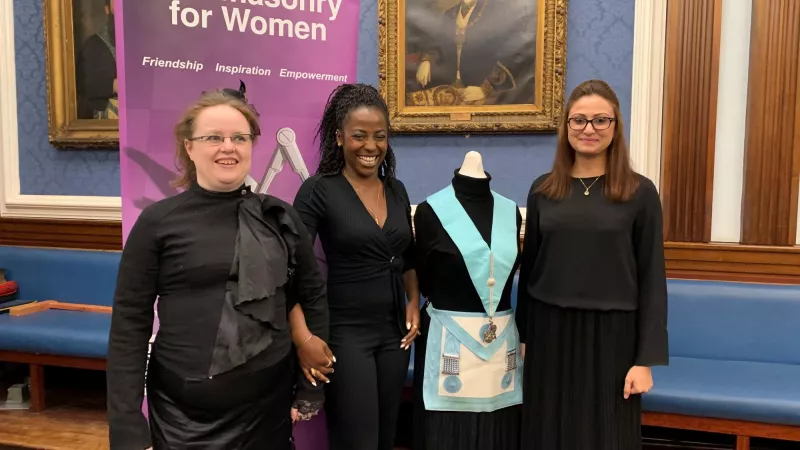Unlock Exclusive Opportunities by Deciding to Join FreemasonToday
Unlock Exclusive Opportunities by Deciding to Join FreemasonToday
Blog Article
Exploring the Mysteries of the Freemason: What You Need to Know
The Freemason, a term usually shrouded in intrigue and debate, stands for an intricate tapestry of historic fact and modern-day myth. Developed in the late 18th century, this secret society was originally rooted in the Enlightenment's perfects but has considering that ended up being identified with conspiracy theories about elite control. As we navigate the origins, key figures, and the stark contrast between misconception and reality, one have to take into consideration just how these narratives affect contemporary understandings of power and privacy. What could be revealed with a better evaluation of these elements might test long-held assumptions concerning the darkness that linger in our society.
Beginnings of the Freemason
The origins of the Freemason are steeped in a mix of historical intrigue and ideological eagerness. Established in 1776 in Ingolstadt, Bavaria, by Adam Weishaupt, the group was originally developed as a secret culture focused on promoting Enlightenment perfects such as factor, secularism, and the separation of church and state. Weishaupt, a teacher of canon law, looked for to test the dominating authority of the church and state, which he considered as overbearing organizations suppressing intellectual and individual flexibility.
The Freemason looked for to hire influential members from various social sectors, consisting of national politics, academia, and the arts, to foster a network devoted to these Knowledge principles. The society operated under a shroud of secrecy, utilizing coded language and routines to protect its members from persecution, particularly offered the repressive climate of the time. Nonetheless, the Freemason encountered significant opposition from both governmental authorities and religious institutions, which saw the team as a hazard to their power.
Key Figures and Members
Who were the essential numbers that formed the Freemason's early impact and instructions? The Bavarian Freemason, started in 1776 by Adam Weishaupt, became a reaction to the oppressive social structures of the time. how to become a freemason. Weishaupt, a legislation professor, visualized the organization as a way to promote Enlightenment ideals such as factor, secularism, and equal rights. His first employment initiatives included prominent pundits, such as Baron von Knigge, that played a vital function in broadening the group's membership and business structure.
One more significant number was Johann Gottlieb Fichte, a noticeable philosopher whose concepts on nationalism and education resonated with the Freemason's objectives. Fichte was not an official participant, his philosophical underpinnings affected the group's belief. Additionally, numbers like the writer and philosopher Johann Wolfgang von Goethe were related to the broader intellectual activities of the moment, although their direct participation with the Freemason stays disputed.
These crucial figures added to the Freemason's early direction, pressing the borders of political and social idea, while their cumulative initiatives intended to challenge recognized standards and promote a climate of progressive adjustment in Europe.
Misconceptions vs. Fact
Numerous misconceptions surround the Freemason, usually blending reality with fiction in a method that covers its real nature. The notion that the Freemason continues to apply considerable impact over globe events is a myth - how to become a freemason.
One more prevalent misconception is that the Freemason consists of a network of elite individuals controling international events. Actually, numerous conspiracy theory concepts exaggerate the team's importance, associating misguided objectives to blog social patterns and occasions. This has resulted in an oversimplified sight of intricate concerns.

Modern Interpretations
Contemporary analyses of the Freemason frequently show more comprehensive societal stress and anxieties and an attraction with privacy and power. This contemporary lens regularly connects the Freemason with conspiracy theory concepts that recommend a hidden elite orchestrates world events, controling governments and economic situations for their very own gain. Such narratives use an ingrained wonder about of authority, specifically in times of situation or social turmoil.

Furthermore, some modern interpretations mount the Freemason as an allegory for the intricacies of globalization and the interconnectedness of prominent people and organizations. This perspective encourages a critical examination of how power characteristics run in today's globe, highlighting the balance between openness and privacy in administration and business practices.
Social Effect and Legacy
Influenced by centuries of intrigue, the cultural influence and tradition of the Freemason prolong much beyond its historic beginnings. This secret society, established in the late 18th century, has actually penetrated different facets of pop culture, from literature and film to music and art. The principle of the Freemason has developed into an icon of conspiracy theories, often standing for a viewed hidden power adjusting worldwide occasions.
In literary works, authors like Dan Brown have actually woven the Freemason into detailed plots, captivating viewers with themes of privacy and power. Films such as "National Prize" and "The Da Vinci Code" even more bolster the allure of the society, mixing fact with fiction to develop engaging stories.
The Freemason's influence also prolongs into music, with musicians referencing the organization to evoke motifs of rebellion and social critique. This representation has actually contributed to an attraction with the concept of private groups regulating the levers of power, reflecting social stress and anxieties concerning authority and transparency.
Eventually, the Freemason's legacy is a complicated tapestry of misconception have a peek here and reality, shaping perceptions of secrecy and control in contemporary discourse. Its enduring visibility in culture highlights mankind's perennial pursuit for understanding concealed facts.
Conclusion
The expedition of the Freemason exposes a complex interplay in between historic facts and modern myth-making. Established in the Knowledge era, this society aimed to test oppressive structures, yet its heritage has actually been eclipsed by conspiracy theory theories that recommend elite manipulation. Comprehending the distinctions in between the initial suitables and contemporary interpretations is vital for understanding the sustaining attraction with the Freemason and its significant impact on social stories bordering power and privacy in society.
Report this page